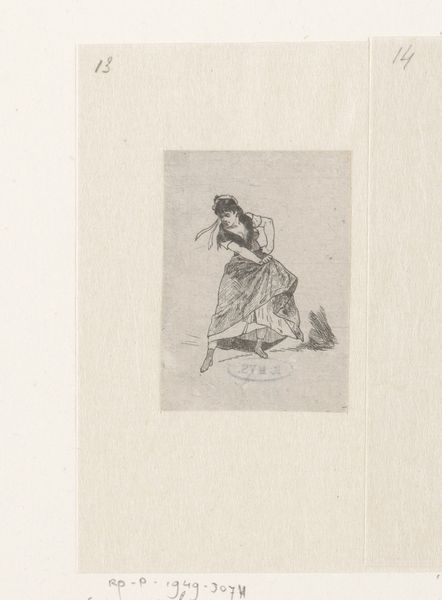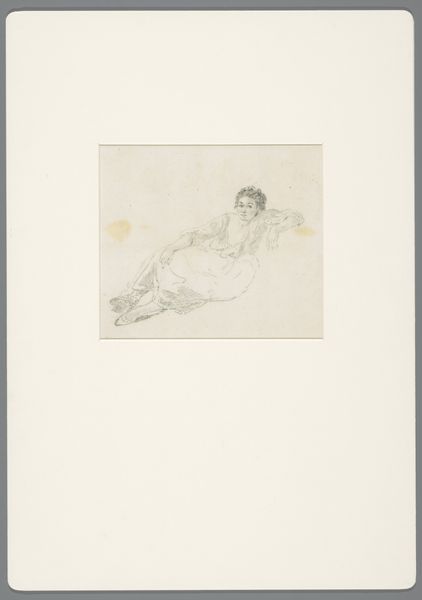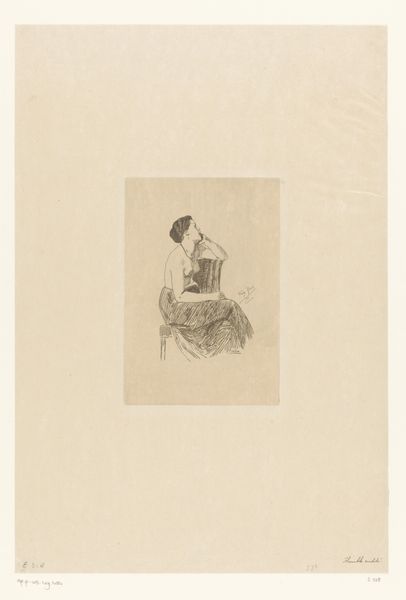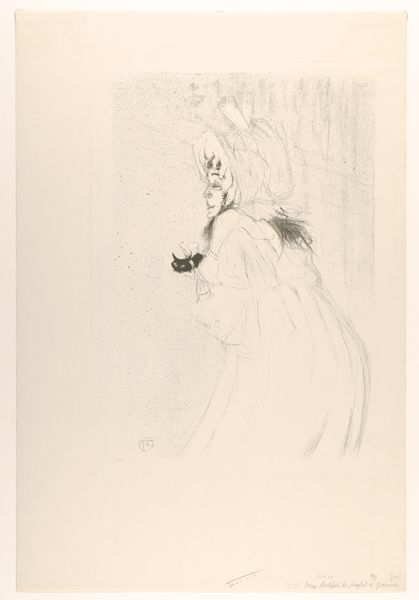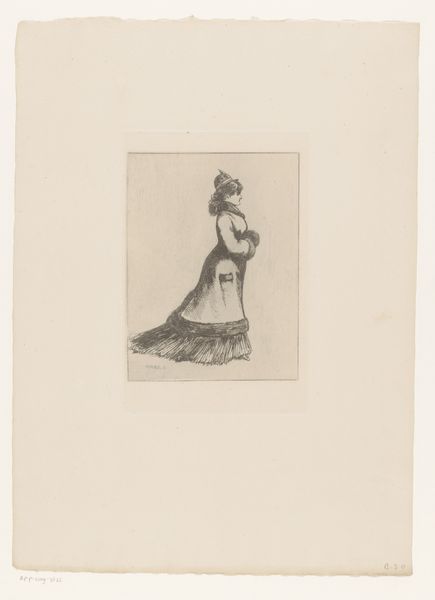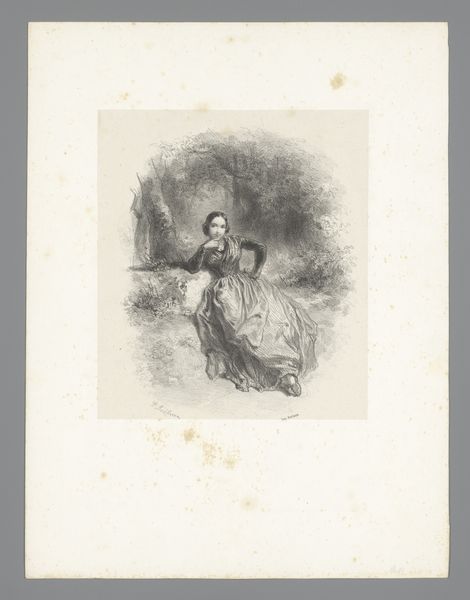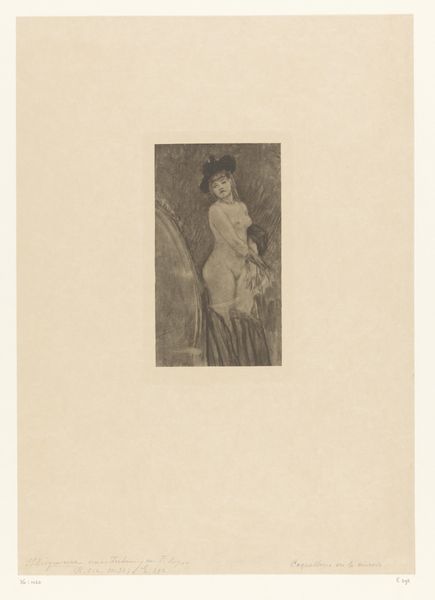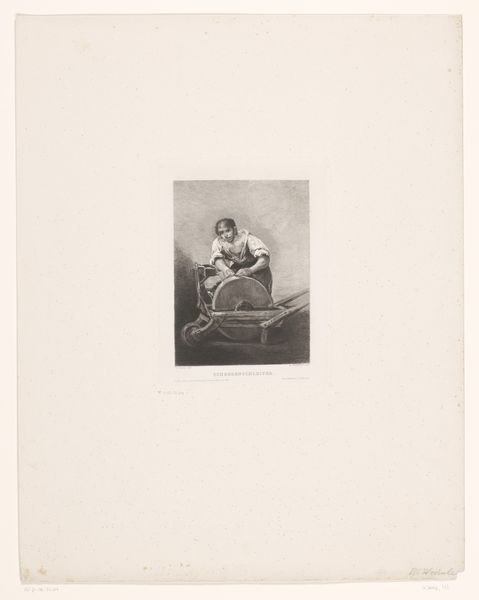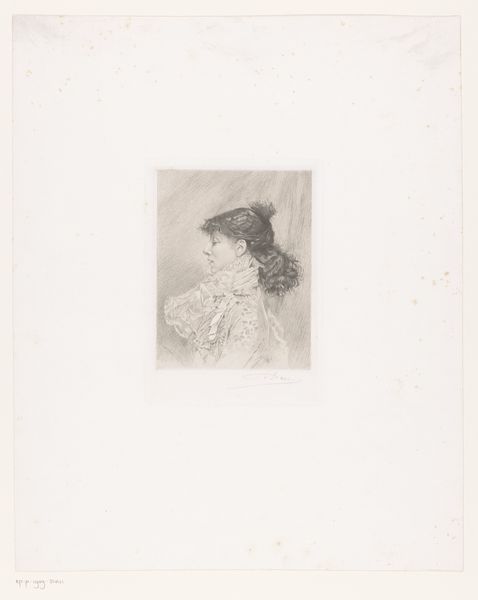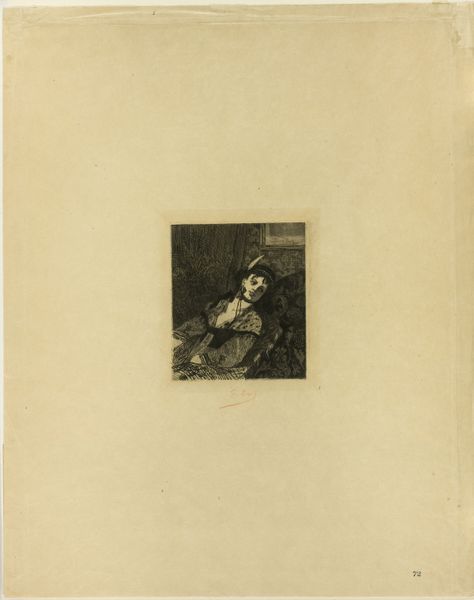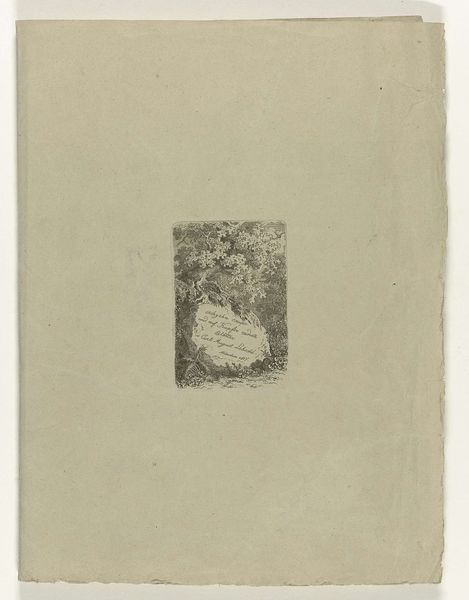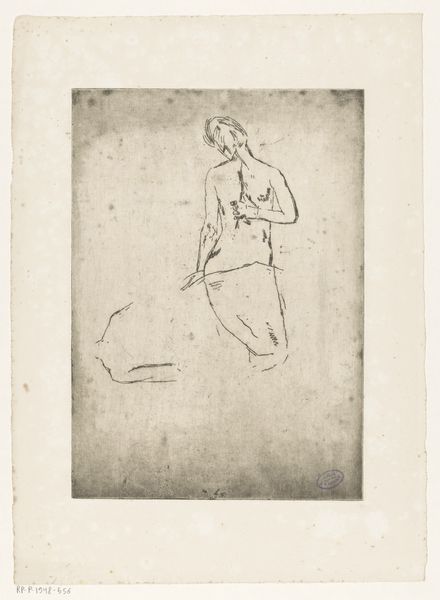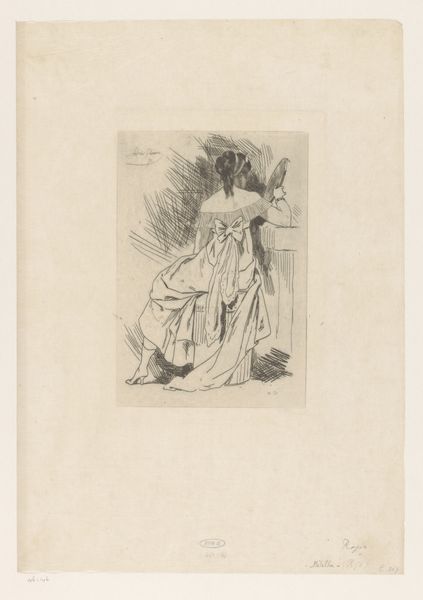
Dimensions: height 73 mm, width 52 mm
Copyright: Rijks Museum: Open Domain
Curator: Today we're looking at Felicien Rops' "Vrouw met hoed en jurk", from 1863. The etching captures a woman in an elaborate dress, now part of the Rijksmuseum collection. What are your initial thoughts? Editor: She looks trapped, doesn’t she? The dress engulfs her. It’s as if the clothing itself is the subject, a status symbol imposing a physical burden, not a source of empowerment or expression for her. Curator: Indeed, Rops often used his art to critique societal norms. The piece falls within a period where fashion dictated restrictive silhouettes, especially for women. Her confinement to societal expectations could indeed be the subject of critique. Editor: Exactly! It begs questions about identity and agency. The way her face is drawn, almost dismissively, feels deliberate. Is Rops highlighting how societal roles and attire obscure individual personality? Curator: The contrast is sharp. The energy is put into rendering the fashion, and very little into the individual, and it suggests he's positioning her as a type rather than a particular person, in a moment where industrial and economic circumstances made this kind of representation widespread and fashionable. But I wonder about this interpretation as purely critical? There may be an aspect of admiration also in rendering the detail of that style. Editor: I see your point, though I feel it’s not mutually exclusive. He can acknowledge beauty, even partake in it, and still dissect its impact. This was, after all, the Romantic period when individuality clashed so intensely with growing industrialization. I think this is a statement on how women were being used as ornaments for this social development. Curator: I'm glad we had this conversation because this particular drawing seems to engage several important contexts within nineteenth-century representations. I’ll be sure to give the artwork another look thinking about those themes we have addressed. Editor: It also encourages me to investigate Romanticism again, especially considering themes around dress and performance. It’s been illuminating to view it through both historical and modern critical lenses.
Comments
No comments
Be the first to comment and join the conversation on the ultimate creative platform.
